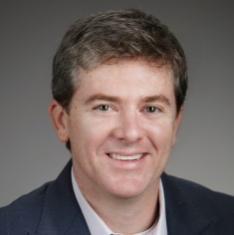
Research Topics
The integration of tumor molecular characterization and precision medicine has proven successful, but challenges remain in implementing these concepts broadly into the pediatric oncology clinic. One major impediment is that as the knowledge of the molecular causes of pediatric tumors has broadened, there is a new understanding that tumors are dynamic systems driven by the interplay of not just genomic alterations but also the tumor microenvironment, host biology, time, and therapy. A second major limitation is the paucity of mechanism informed, rationally designed, therapeutic regimens for rare pediatric tumor subtypes.
These challenges are felt acutely by the approximately 1000 children and adolescents who are diagnosed with soft tissue sarcomas each year in the United States. This heterogenous group of tumors encompasses multiple disease subtypes with distinctive clinical, histologic, and molecular features, with patients typically enduring aggressive treatment regimens that lead to considerable long-term morbidity. Patients with many subtypes, including those with malignant peripheral nerve sheath tumors (MPNST) and rhabdomyosarcoma (RMS), face significant mortality and limited therapeutic alternatives. To address these significant therapeutic shortcomings, my laboratory focuses on these tumors and is organized into two projects:
Project 1: Detection, interception, and targeting the transformation of benign neurofibromatosis 1 (NF1) peripheral nerve sheath tumors to malignant peripheral nerve sheath tumors (MPNST). Neurofibromatosis type 1 (NF1) is a common autosomal dominant disorder caused by an inactivating germline mutation in the tumor suppressor gene NF1, affecting ~1/3000 newborns. NF1 is a cancer predisposition syndrome associated with highly elevated risk of multiple cancer types including tumors of the peripheral nerves. NF1 nerve sheath tumors provide a unique model system for studying how a tumor evolves over time and with therapy. Approximately one third of NF1 patients suffer from histologically benign but debilitating plexiform neurofibroma (PN), which are genetically driven by biallelic inactivation of NF1 and consequent activation of the MAP kinase pathway. Work from the POB and others has highlighted an intermediate premalignant tumor broadly classified as an atypical neurofibroma (AN). The final step towards malignancy is a transformation to an MPNST that frequently arises from PN or AN and is a highly aggressive sarcoma with a dismal prognosis. These tumors readily metastasize and are highly resistant to radiotherapy and chemotherapy. Beyond surgery for localized disease, there have been no successful therapies that cure MPNST to date. Therefore, the goal of Project 1 is to detect and intercept MPNSTs at a point when surgery is still a curative option and to provide novel treatment options for those patients who progress to MPSNT.
Project 2: Application of precision oncology for high-risk pediatric rhabdomyosarcoma. The goal of project 2 is to enable precision oncology for patients with deadly subtypes including MYOD1L122R mutant and fusion oncogene PAX3::FOXO1 rhabdomyosarcoma. Rhabdomyosarcoma is the most common soft tissue sarcoma of childhood and the prognosis for those with rhabdomyosarcoma remains poor, particularly for children with intermediate- or high-risk disease where patients today are still treated with the intense chemotherapy/radiation/surgery regimen devised in the 1970s. My previous work has helped define high-risk molecular subtypes of rhabdomyosarcoma and translated these findings into the current risk stratification used on national trials performed by the Children’s Oncology Group.
Biography
Selected Publications
- Chen L, Shern JF, Wei JS, Yohe ME, Song YK, Hurd L, Liao H, Catchpoole D, Skapek SX, Barr FG, Hawkins DS, Khan J. Clonality and evolutionary history of rhabdomyosarcoma. PLoS Genet. 2015;11(3):e1005075.
- Shern JF, Chen L, Chmielecki J, Wei JS, Patidar R, Rosenberg M, Ambrogio L, Auclair D, Wang J, Song YK, Tolman C, Hurd L, Liao H, Zhang S, Bogen D, Brohl AS, Sindiri S, Catchpoole D, Badgett T, Getz G, Mora J, Anderson JR, Skapek SX, Barr FG, Meyerson M, Hawkins DS, Khan J. Comprehensive genomic analysis of rhabdomyosarcoma reveals a landscape of alterations affecting a common genetic axis in fusion-positive and fusion-negative tumors. Cancer Discov. 2014;4(2):216-31.
- Long AH, Haso WM, Shern JF, Wanhainen KM, Murgai M, Ingaramo M, Smith JP, Walker AJ, Kohler ME, Venkateshwara VR, Kaplan RN, Patterson GH, Fry TJ, Orentas RJ, Mackall CL. 4-1BB costimulation ameliorates T cell exhaustion induced by tonic signaling of chimeric antigen receptors. Nat Med. 2015;21(6):581-90.
- Shern JF, Yohe ME, Khan J. Pediatric Rhabdomyosarcoma. Crit Rev Oncog. 2015;20(3-4):227-43.
- Brohl AS, Solomon DA, Chang W, Wang J, Song Y, Sindiri S, Patidar R, Hurd L, Chen L, Shern JF, Liao H, Wen X, Gerard J, Kim JS, Lopez Guerrero JA, Machado I, Wai DH, Picci P, Triche T, Horvai AE, Miettinen M, Wei JS, Catchpool D, Llombart-Bosch A, Waldman T, Khan J. The genomic landscape of the Ewing Sarcoma family of tumors reveals recurrent STAG2 mutation. PLoS Genet. 2014;10(7):e1004475.
Related Scientific Focus Areas





Molecular Biology and Biochemistry
View additional Principal Investigators in Molecular Biology and Biochemistry
This page was last updated on Wednesday, November 19, 2025